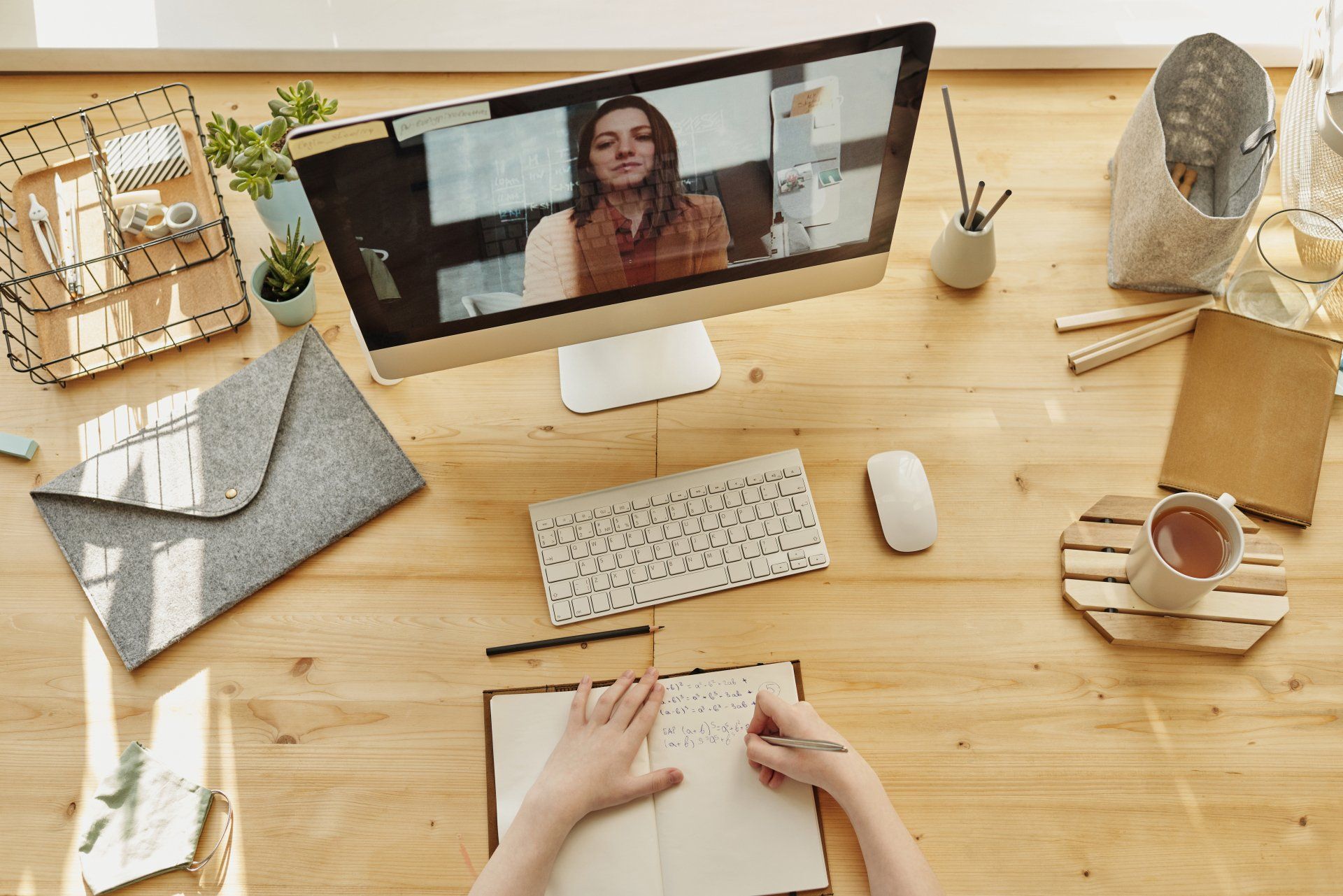Trapped behind your computer screen? Here's how to set boundaries and push back on all of those virtual meetings.
Before 2020, virtual meetings were a novel break from the conference room. Now it seems they’re the new default.
There seems to be a misconception that video meetings are less fatiguing than meeting in person. As a consequence, people are now inundated with back-to-back video meetings, with little time left for normal workday tasks.
Can you relate? If so, this article can help. I'll share some strategies on how you can advocate for your physical and mental health, and set limits on your screen time.
Busting the Myth of Virtual Meetings
Virtual meetings took the world by storm in 2020 when businesses told employees to work from home. At first, people were touting the benefits of meeting online.
As the world plunged headlong into videoconferencing mode, little was known about the effects of all that screen time.
But researchers were getting more and more data on
the downside of virtual work meetings. Things like prolonged direct screen gazing, social isolation, and hyper awareness of one's own self-image, all added up to a type of fatigue never
before seen in the workplace.
Soon there was a name for it: Zoom Fatigue, referring not just to the Zoom platform, but to all videoconferencing brands. By the way, in this article I will use the word Zoom as a generic way to describe all videoconferencing.
It’s easy to see how Zoom fatigue happens. Humans are social creatures. We are “wired” (pun intended) for in-person contact. The virtual world lacks human touch, body language, side conversations, and those yummy cookies your coworker brings to the conference room.
Humans Aren't Computers
If you take away all these in-person social interactions and replace them with a completely different modality, there just might be a problem, right?
Some argue that we need to adapt to virtual meetings, that meeting in person is a thing of the past.
But it’s not our lack of ability to adapt to a new modality, it’s the
frequency
of the modality. Video conferencing has been stacked into people's work calendars, day after day, hour after hour. It’s not sustainable.
Your Physical Health
In my previous career in the tech world, I almost ruined my health by spending long hours in front of a computer screen. This made me realize that nothing is more important than my health.
Before the onslaught of video conferencing, you could take at least a few breaks from your computer. Nowadays you can be trapped for hours in a virtual conference.
The human body is not designed to be staring at a screen for so long. It's bad for your eyes, your back, and your posture.
Your Mental Health
While it’s easy to measure the physical impact of too much Zooming, the mental impact is more subtle but just as serious.
Without regular screen breaks, the stress hormone cortisol remains elevated in the body, which can lead to chronic stress. Over time,
chronic stress can put you at risk for anxiety, depression, and other mental health problems.
Zoom fatigue can impact other domains of your life besides work. You might be grumpy with your spouse, or feel emotionally exhausted and skip your gym workout.
Zoom Meetings and Decreased Creativity
Whether you’re an employee or your own boss, spending endless hours on Zoom is linked to decreased creativity.
With in-person meetings, there is more spontaneity, more of an organic flow and sharing of ideas. Zoom meetings lack this dynamic.
In fact, there are studies suggesting
Zoom meetings stifle creativity due to the narrow, concentrated visual focus of the computer screen.
Setting Boundaries with Virtual Meetings
Okay, clearly too much Zooming is bad for you. So, what to do about it?
If you’re your own boss, simply cutting back on Zoom meetings may be an easy fix. You can increase your creativity, and reduce chronic stress and fatigue.
If you’re an employee, it might be a different story. Your company may not encourage you to simply say no to Zoom. This is where the art of boundary setting comes in.
Boundaries can be defined as healthy limits between people. Boundaries allow flexibility, while at the same time respecting individual autonomy.
Setting boundaries can be difficult, especially at work. Here are a couple of suggestions:
1. Try an Experiment in Boundaries
Try flat out saying no to your next Zoom meeting. Say that you have extra work to do and request that somebody send you the meeting notes. See what happens. You likely won't be fired, and best-case scenario, your boss won't really care.
2. Think of Your Coworkers
If your work culture makes it hard for you to set boundaries on video meetings, consider your coworkers. If you are mentally and physically fatigued, most likely they are too. You might bring this up with your boss, or with HR. Frame your concern not just as personal for you, but also as preventing employee burnout in general.
3. Enlist an Ally in Boundary Setting
Sometimes you need an ally when setting boundaries at work. Consider talking to a trusted coworker about your Zoom concerns. Maybe the two of you could bring up the issue together.
Setting boundaries at work can provoke anxiety, but you might be surprised at the response you get. Often in high-paced work environments, bosses and HR departments are so busy that they don't even realize when people are suffering. They may thank you for speaking up.
Learn more about how to set boundaries in my blog post
How to Finally Stop Being a People-Pleaser
More Ways to Reduce Zoom Fatigue
Besides setting boundaries, there are some other practical ways to reduce Zoom fatigue.
One of the problems with Zooming is that you are sitting for hours on end. Consider getting a standup desk to mix things up. This can reduce fatigue.
If the social protocol is that nobody takes a break during a meeting, consider walking offscreen temporarily, to see what happens. If no one reacts, you might try taking a longer break.
You might also test the cultural norms by stretching your arms, or drinking water during a meeting.
There are also plenty of environmental tweaks you can do to beat Zoom fatigue. You could have a nature poster right next to your screen to allow your eyes to drift off and refocus during meetings.
Other ideas include using your smartphone instead of your computer screen. This reduces the size of the screen and allows your eyes a chance to focus on other things in the room.
If you want to be really bold, you could propose an in-person meeting instead. Again, this is one of those experiments where you see what happens. If it doesn't get you fired, it might be worth it!
This excellent
article from Stanford University talks about causes of Zoom fatigue and offers some solutions. I highly recommend it.
Conclusion
While Zooming can be a blessing, like reducing the need to commute, it can also be a curse if people over-rely on it.
Mental and physical problems are very real concerns related to extensive video conferencing. But the more you set boundaries, the less likely you are to suffer from Zoom fatigue.
Even if you haven't yet experienced any problems, you might consider reducing your screen time anyway. My suggestion is to try a digital detox. Check out my blog post on this here:
The Digital Detox.
Want some guidance on navigating stressful work environments? Consider my
counseling services for work and career issues.
Or feel free to reach out and schedule a free phone consultation today.





